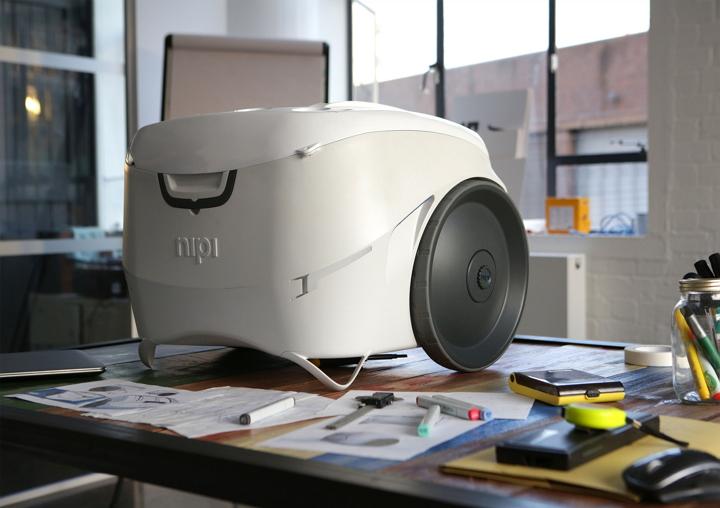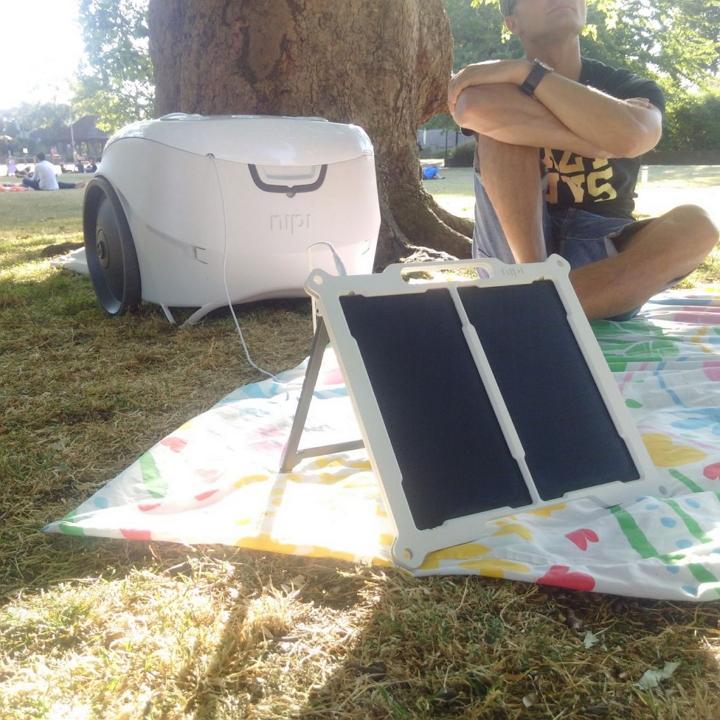 To get their initial concept design for a novel cooler realized as a working prototype, Nipi turned to 3D printing service provider 3D Print Bureau.
To get their initial concept design for a novel cooler realized as a working prototype, Nipi turned to 3D printing service provider 3D Print Bureau.
And using FDM and PolyJet 3D printing solutions, 3D Print Bureau produced a group of fully-functional parts for the Nipi to take care of any design issues before the company committed to full-scale manufacturing.
“For start-ups like us, I cannot overemphasize how important it is to quickly get to a stage where you can feasibly say whether your idea could be a viable product,” says Luke Guttery, the Product Design Lead at Nipi Smart Cooler. “Having access to 3D printing gives us the ability to make that decision faster than ever before.”
Using Stratasys multi-material 3D printing and a UV-resistant ASA material, Guttery says 3D printing was key to the rapid development of Nipi prototypes used for testing in outdoor environments
For the result, the Nipi Smart Cooler, the development process of the device is said to have been 75% faster than if the company had used traditional manufacturing methods.
 Targeting the consumer market, Nipi says they have recently secured the backing of an Asian investor to bring the product to market.
Targeting the consumer market, Nipi says they have recently secured the backing of an Asian investor to bring the product to market.
The Nipi is a solar-panel-powered cooler which the company says offers ice retention for up to six days. The cooler is packed with features such as a charging hub, internal and external LED lighting, a safe deposit, cup holders, and a chopping board.
“It’s amazing how quickly we could go from an idea on a piece of paper to a fully-functional prototype that we could test outdoors,” Guttery says. “Without 3D printing, this simply would not have been achievable in the given time frame. In just a few days we had already produced the main body in UV resistant materials to test the solar panels in the sun, and large-scale over-molded wheels with rigid interiors and rubber treads.”
Stratasys multi-material 3D printing was also used to build some of the over-molded parts of the Nipi such as the handles and large tires. Those parts required combinations of rigid and rubber-like materials.
“Utilizing the best of each of Stratasys’ 3D printing technologies was integral to getting a fully-functional, test-worthy prototype to the Nipi team. With the ASA material, we were able to develop a fade-resistant prototype specifically designed for outdoor use. Using multi-material 3D printing, we could accurately validate the pull of the handle and its weight-bearing ability, as well as defining the exact tread of the tires required before moving to final production,” says Gary Miller, the Managing Director of 3D Print Bureau. “The ability to over-mold using 3D printing was integral as it helped us determine the shape, thickness and style of the tread you see on Nipi today.”
We took a brief look at the smart cooler last month, when it launched as a Kickstarter campaign. That campaign has since been canceled to allow for redesign, but, they say, they “opted to cancel and relaunch as opposed to launching a project we knew was going to be delayed, but have invited our backers to be part of this process. We always knew this decision would bring disappointment but ultimately thought it was the right thing to do. We didnt want to be another delayed kickstarter project.”
What do you think of the multi-functional Nipi cooler? Will you buy one? Let us know in the Nipi Cooler Prototyped with Stratasys forum thread on 3DPB.com.
Subscribe to Our Email Newsletter
Stay up-to-date on all the latest news from the 3D printing industry and receive information and offers from third party vendors.
You May Also Like
Printing Money Episode 18: The DC Fly-In with Mark Burnham, AddMfgCoalition
It’s only been a week since the previous show, but Printing Money is back already with Episode 18. Certain events call for Printing Money’s coverage, and the recent 2nd Annual...
Aerospace OEM Invests $9.1M in Michigan for Metal 3D Printing and More
Barron Industries, a foundry based in Michigan specializing in serving the aerospace and defense sectors, has made a $9.1 million capital investment to expand its operations in Oxford, Michigan. The...
Can Higher Power Density Engines Lead to Broader 3D Printing Use?
Traditionally, when it comes to sports cars, interest has centered around metrics such as horsepower per cubic inch and power-to-weight ratios. These metrics are calculated and interpreted differently by various...
Wisconsin’s Evology Adds Digital Sheet Forming to Service Roster
Evology, a service bureau based in Wisconsin and specializing in serving strategic sectors like aerospace and defense, has added digital sheet forming (DSF) to its repertoire of manufacturing capabilities. Evology...
































